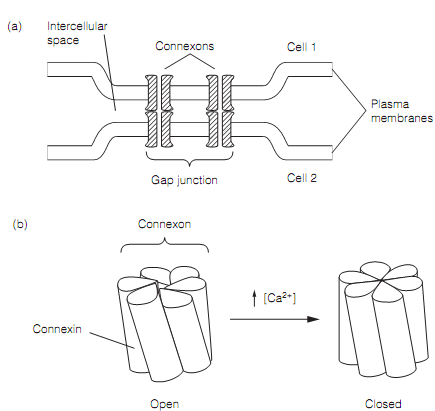Electrical transmission
The Electrical transmission is mediated by the electrical synapses that are gap junctions between adjacent neurons. The Gap junctions are arrays of paired hexameric ion channels known as connexons as shown in figure. The channel pores are 2–3 nm in diameter, permitting ions and small molecules to permeate between the neighboring neurons. By electrically coupling neurons, the gap junctions permit any potentials, for illustration action potentials, to spread among cells. The key features of electrical transmission are that it is extremely fast, signals are transmitted with no distortion, and it works in both the directions. The Gap junctions among cells can close. Each of the connexon is made up of six subunits known as connexins, and in response to a rise in intracellular Ca2+ concentration, the connexins rotate to close the central pore as shown in figure.

Figure :(a) Gap junction. (b) Change in configuration of the connexons to close a gap junction.